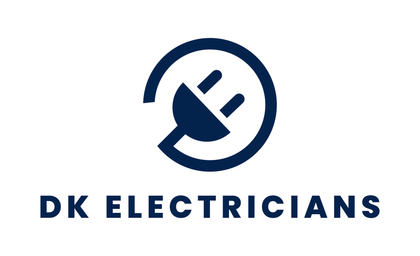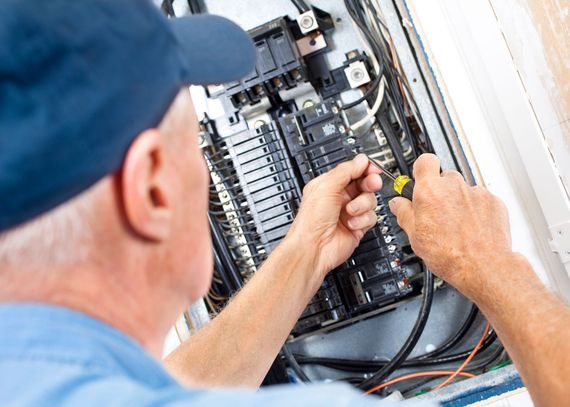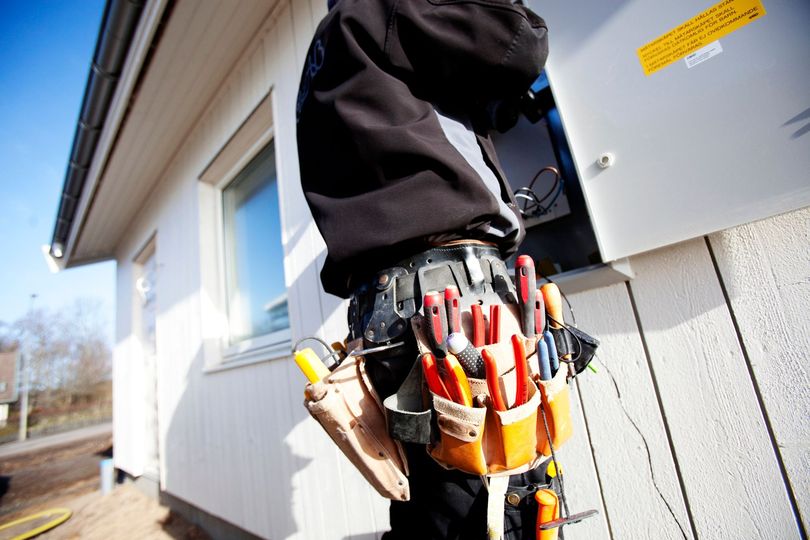
Contact Us!
State Licensed TECL # 23314 ME # 3772 | 705 S. Floyd Road Richardson TX 75080
Contact Our Master Electricians for A Free Estimate
Your Trusted Electrical Experts in Richardson, TX
Electricity plays a vital role in our modern way of life. Ensuring your electrical system's proper functioning and maintenance is of utmost importance. When it comes to your home, any electrical issues can jeopardize the safety of your loved ones. At the same time, for your business, they can cause significant damage to both your operations and valuable assets housed within the building.
At DK Electricians, we take pride in being your trusted electrical service provider in Richardson, TX. With a team of skilled Master electricians and a commitment to exceptional service, we are here to fix all your residential and commercial electrical problems.
Contact us at (972) 979-1091 to schedule a consultation with our Master electricians and experience the excellence of DK Electricians.

A Wide Range Of Electrical Services to Power Your Home and Business
At DK Electricians, we offer a comprehensive range of electrical services catering to residential and commercial clients. Our dedicated team of Master electricians possesses the expertise and experience to handle any electrical project, big or small.
We provide reliable residential electrical services, from installations and repairs to safety inspections and upgrades. Whether you need assistance with lighting, wiring, panel upgrades, or any other electrical necessities for your home, our team is here for you.
We understand the unique electrical requirements of commercial properties. Our commercial electrical services encompass everything from electrical system installations and maintenance to troubleshooting, code compliance, and energy-efficient solutions. Trust us to power your business with reliability and professionalism.

Additional Services
- Fully Stocked Mobile Warehouse
- Trouble Shooting Specialist
- Service Panel Upgrades
- Breaker and Fuse Replacements
- Code Corrections
- Lighting and Ceiling Fans "All Types"
- Pool and Spa Circuits
- Appliance Circuits
- Remodeling and Re-Wiring
- Mobile and Manufactured Homes
- All Major
Electrical Contractor Services
Our Service Areas Include All of Dallas-Fort Worth as well as
Plano, McKinney, Frisco, Addison, Lake Dallas, Little Elm, Allen, Garland, Rockwall, Rowlet, Highland Park and all surrounding areas.
Don't just take our word for it - hear what satisfied clients say about our services.

⭐⭐⭐⭐⭐
Excellent job, very professional, knowledgeable, trustworthy, very nice people. Highly recommend them. When it comes to price, they won't rip you off. It's my second time I used this business and they wiI stay the one company I will use in the future for electrical reapairs.
- Gabriela F.
⭐⭐⭐⭐⭐
Tom was amazing - I had called D&K because we had a problem with one of the circuits in our house. Tom was responsive and quick on fixing issues! Tom was absolutely wonderful- quality of work, competency, customer service, and people skills. Highly recommend D&K lighting and Tom! I had a great experience with DK Electricians.
- Robert D.
⭐⭐⭐⭐⭐
Very friendly, and knowledgeable. They came by the same day to provide an estimate, ended up coming back a few hours later to complete the installation. The price was definitely fair given the immediate service and doing exactly what we wanted. They installed some new wiring and conduit tubing for my shops new lift. Highly recommend!
- Remington S.
⭐⭐⭐⭐⭐
Tom and his assistant were fantastic! They were prompt and diagnosed & fixed my problem within one hour. They charged me half of another estimate I got. I will definitely save their number, and I highly recommend them. I am very pleased that I called DK!!
- Brenda L.
⭐⭐⭐⭐⭐
I had a great experience with DK Electricians. They were professional and personable. When they encountered a problem with our studs, they ran to the store to buy the correct spot and made sure everything was done correctly. They did not cut corners and their estimate was spot on with what I actually paid.
We will be using them again. I highly recommend them!
- Beth W.
Ready to experience the excellence of DK Electricians? Contact us at (972) 979-1091 to schedule a consultation with our Master electricians.
Contact Information
Address: 705 S. Floyd Road Richardson TX 75080
Phone: (972) 979-1091
Email: tepecikk@yahoo.com
State Licensed TECL # 23314 ME # 3772
Business Hours
- Mon - Fri
- -
- Sat - Sun
- Closed
Services available on Thanksgiving and Christmas
Payments Accepted






Bitcoin, Litecoin, Etherium